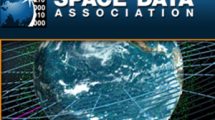 The Space Data Association is working to reduce collision risk, for a safer space environment. However, with so many processes already in place including the existing Space Data Centre (SDC), and very few incidents to date, it’s easy to wonder why we even need to bother.
The Space Data Association is working to reduce collision risk, for a safer space environment. However, with so many processes already in place including the existing Space Data Centre (SDC), and very few incidents to date, it’s easy to wonder why we even need to bother.
Current Systems
To properly answer that question, I need to first talk about the existing processes and some of their limitations. The current SDC uses data provided by all members of the Space Data Association. This of course relies on their providing timely ephemeris data with future manoeuvres included, and on the whole most members are good at doing this. We then marry that up with data from the public catalogues, such as that provided by the JSpOC. Operators are alerted of any upcoming conjunction warnings and can take appropriate action as necessary.
There are several problems. Quite simply, the data available today is simply not accurate enough for robust safety of flight. According to Analytical Graphics Inc (AGI), which runs the SDC on our behalf, the public catalogue is missing an estimated 50% of GEO±100km crossing objects down to 20cm in size. This is significant, because objects larger than 20cm have the potential to cause serious damage if a collision occurs, and could very well further add to the debris population.
One problem is that while an operator’s internally-consistent orbit determination processes are often adequate for its own station-keeping operations, inherent biases and offsets in ground networks are often too large for accurate collision avoidance. Consequently, an operator’s satellite may actually be located many kilometres from where the operator believes it to be. Even a bias of a few kilometres can seriously limit the ability to undertake meaningful collision avoidance, and hence jeopardise safety of flight.
Without having pinpoint accuracy, you could well end up performing operations that actually increase the risk of a collision. This means the warnings are simply not actionable; we risk doing nothing or even making operational decisions that make the situation worse.
The Data
As part of its technical analysis, the SDA and AGI conducted extensive collision risk and encounter rate research, drawing upon a combination of data sources and methods. Sources included JSpOC data drawn from 34,000 GEO conjunctions closer than 10km within a three-year period, conjunction data from the Space Data Centre over the same period, and four other independent analysis methods. These results were then compared in aggregate with the findings of eleven published external researcher papers. The comparisons revealed a clear picture of collision risk being as much as four orders of magnitude higher than previously understood, and relative velocities as high as 4km/s were found, far higher than anticipated.
Where do we go now?
We have worked with AGI to develop a step change in capability with the Space Data Centre 2.0. This updated version is capable of tracking much smaller objects, with much better accuracy for both active satellites and debris.
Ultimately, what that means is warnings will be truly accurate and actionable, enabling operators to effectively manage their satellites. We now need all operators to sign up, to fully maximise its potential to serve the industry and protect the space environment.











Add Comment